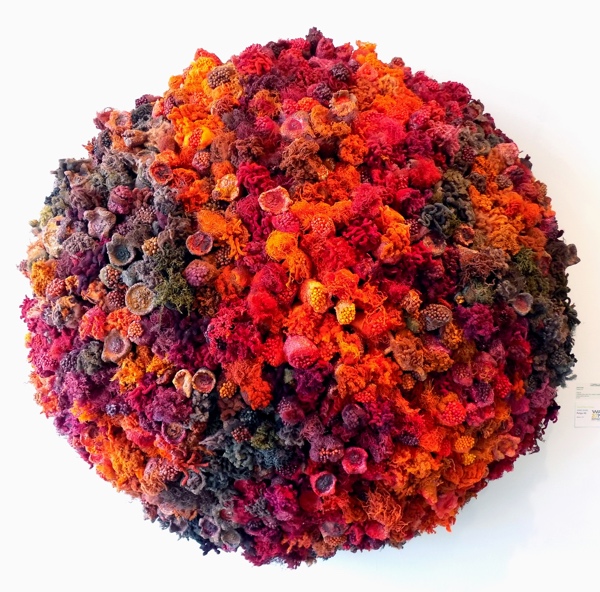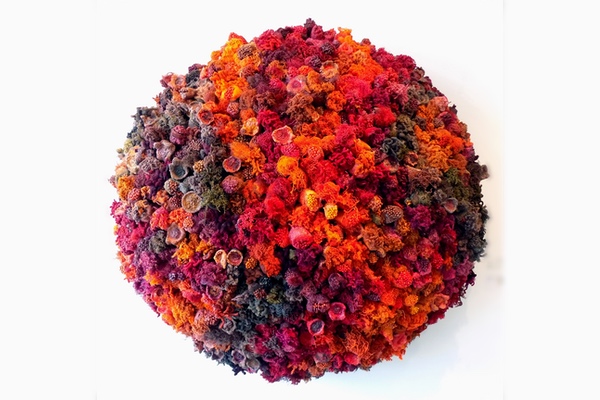Enjoy our WTP Spotlights, notable selections featuring artists
and writers from our Woven Tale Press magazine. To read the
issue in full subscribe and you can also register on our site
to enjoy our archive.
Based in Cleveland, OH, Jonah Jacobs was born in Denmark, and is a graduate of Antioch College. In 2022, he was the recipient of the James Renwick Alliance Award for Excellence, among other awards. His work has been exhibited in solo and group shows throughout Ohio and other parts of the United States.

Polyp #2
cardboard tubes, paint, dye, oatmeal, plaster, sand,
fabric, yarn, Polyfil, egg cartons, cottons swabs
48” diameter, 26” depth
See his work in WTP Vol. XI #3
“The main emphasis of my artwork is to recreate the grandeur and complexity of natural structures. Understanding the physicality and how form and function are intertwined in nature is the philosophical foundation from which all of my sculptures are created. I want to know how things are built and not just what they look like.
“Most of my work is breaded with oatmeal—the oatmeal, along with sand and plaster, gives my work a textural quality not seen in other works of sculpture. The oatmeal also acts as a sponge that soaks up the various dyes. This gives my work a strange vibrancy and natural blending of tones. And many of my organic-looking sculptures are created through a method of layering. This is similar to the way rings are formed on a tree, the difference being that my sculptures grow vertically from a ‘genetic blueprint,’ as opposed to trees which grow outward from an inner ring. Fire also plays a large role in some of my work. I use fire to create spontaneous and organic shapes. This helps keep my work from becoming too formulaic or geometric in form.
“My work explores how beauty and complexity emerge from the repetition of simple shapes, for many of my sculptures are created by combining thousands of individual pieces to create complex organic forms. Some of the unconventional materials I use are: cardboard, egg cartons, dryer sheets, yarn, and other textiles, cardboard tubes, gravel, Styrofoam, Polyfil, sand, salt, various spices, quinoa, and oatmeal.”
Click here to see more featured work by WTP artists.

